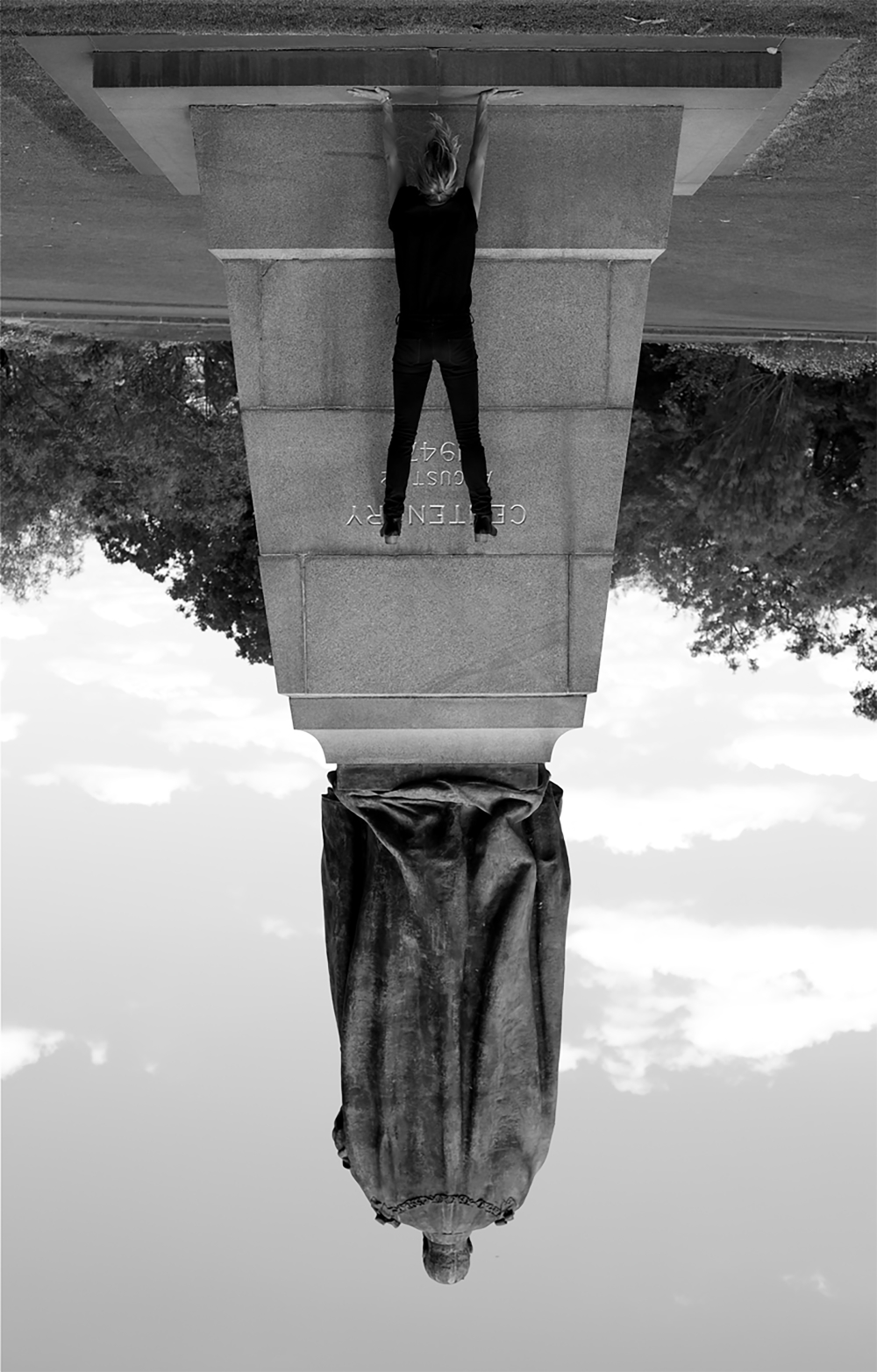
DOCENT PICK
The Body is the New Monument
21/08/2024
Docent's capsule "The body is the new monument" explores how contemporary art has shifted its focus from traditional monuments to the human form as a central theme. This movement reflects a deeper engagement with identity, vulnerability, and the ephemeral nature of existence. Artists use the body to challenge societal norms, celebrate diversity, and express personal narratives. By doing so, they transform the body into a powerful symbol of cultural and historical significance.
Self-reflection(s)
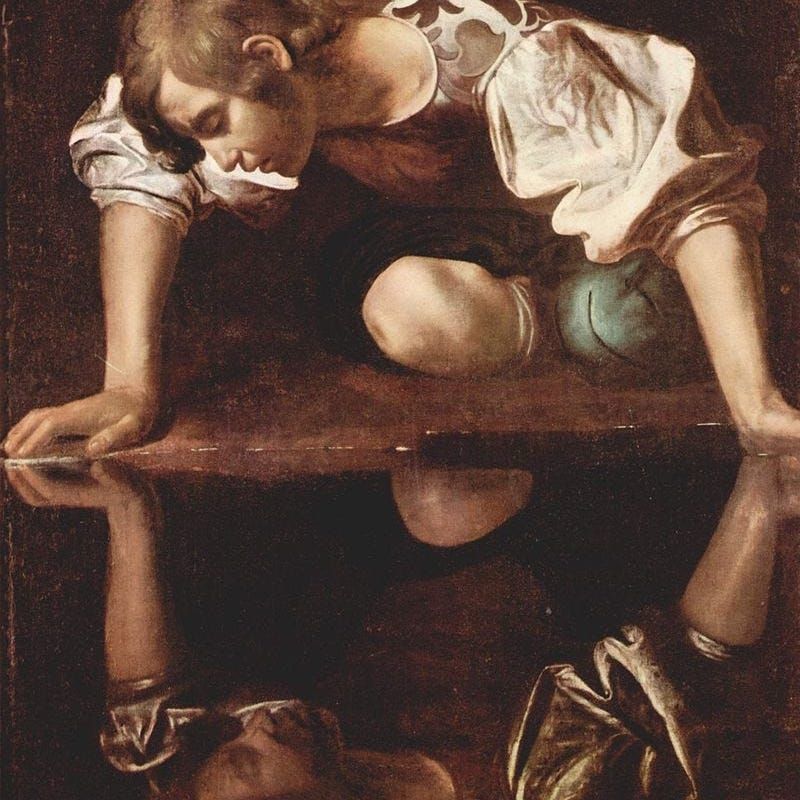
Caravaggio's "Narcissus" captures the mythological figure entranced by his own reflection in a dark pool of water. The chiaroscuro technique emphasizes the contrast between light and shadow, highlighting Narcissus's intense self-absorption. The painting explores themes of vanity and self-obsession, depicting Narcissus in a moment of eternal contemplation.
Through his evocative and thought-provoking works, Bobby Yu Shuk Pui invites viewers to reflect on their own identities and the complexities of the world around them. In the piece mentioned above, the artist confronts us with a universal moment of self-contemplation, highlighting the intricate relationships we have with ourselves in an increasingly complex world, filled by social medias.
"Phone User 4" exemplifies the modification of human stature and nature through the pervasive use of technology. The phone profoundly alters all aspects and the bodily presence of the subject, transforming their posture, behavior, and even identity.
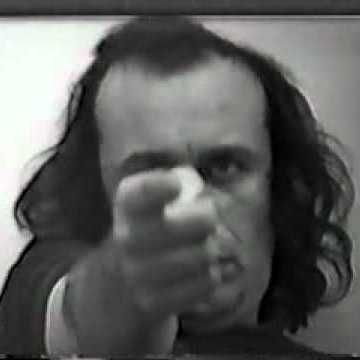
In "Centers," Vito Acconci faces the camera, pointing at his own image on the video monitor while trying to keep his finger centered. This act of pointing at himself simultaneously directs attention to the viewer, reflecting the psychological depth of his video work. As the performance progresses, Acconci makes minor adjustments to his finger’s position as his endurance wanes. He described the piece as shifting focus from himself to the outside viewer, expanding his gaze from introspection to engagement with passing viewers.
Vito Acconci's work has established a legacy among artists who fragment the image of the subject, developing new visual strategies to provoke self-reflection and engage viewers more deeply.
Primordial forms
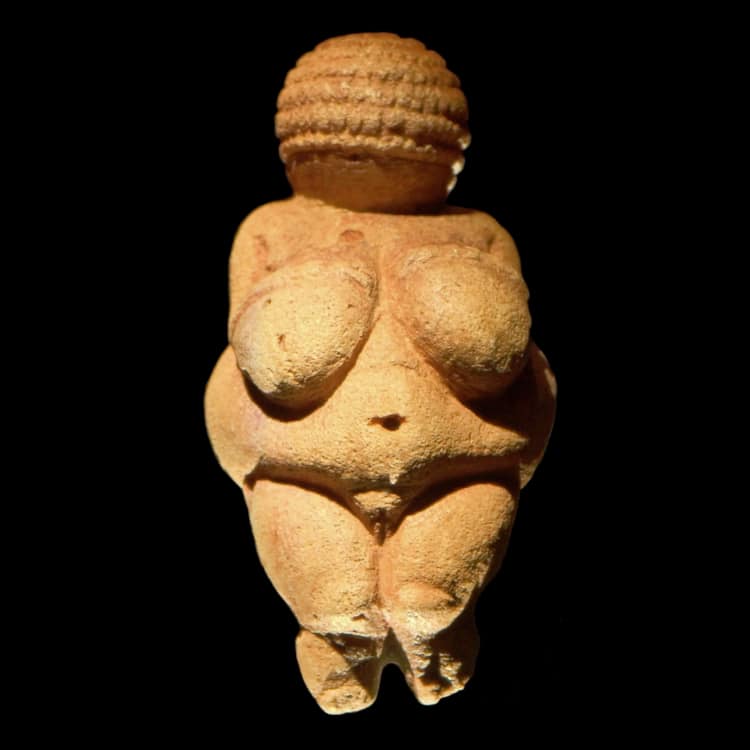
The Venus of Willendorf, a prehistoric sculpture from around 28,000–25,000 BCE, remains a powerful symbol in contemporary art for its representation of fertility and the female form. Its exaggerated features challenge modern perceptions of beauty and body image. Contemporary artists often reference the Venus to explore themes of gender, identity, and the primal aspects of human existence.
Renée So's totemic sculpture reinterprets ancient forms through a contemporary lens, blending minimalist design with symbolic depth. Its compact, abstract shapes evoke a sense of ritual and reverence, connecting modern viewers to primal themes.
The body, the machine?
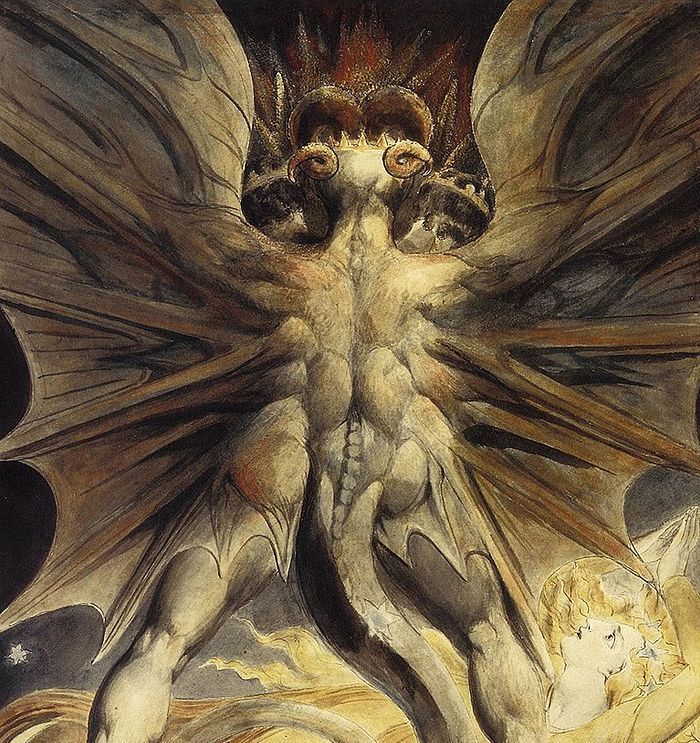
After the French Revolution, artists like William Blake turned to biblical imagery from the Book of Revelation to explore the turmoil of their era. In this watercolor, Blake depicts a dragon with seven heads and ten horns. The dragon, representing Satan, attempts to devour the soon-to-be-born son of the woman, who symbolizes the Virgin Mary, Israel, and the church. Blake emphasizes the muscular quality of the dragon's back, underscoring the formidable and threatening nature of this demonic force.
In her captivating work, one might see a visual resonance with the muscular quality of Blake's dragon, blurring the line between human and monstrous forms. This ambiguity prompts viewers to question whether the form is human or otherworldly.
The "Harponner CAPO" chair by HR Giger is a striking example of the Swiss artist's distinctive design language, which blends elements of surrealism and biomechanical aesthetics. Inspired by Giger's iconic style, known for its intricate, organic forms and dark, otherworldly influences, the chair features a visually arresting design that mimics the shape of a harpoon. Its sculptural quality and detailed textures create a chair that is both a functional piece of furniture and a work of art, embodying Giger's fascination with the fusion of human and machine elements.
Still standing

Although these interactions between human and machine might lead us to believe that the human body will never be the same, contemporary artists suggest otherwise. Even before our time, Rodin was bringing monumental figures to life from bronze, such as his statue of the writer Honoré de Balzac.
Shaun Gladwell's work redefines the concept of monuments by merging physical and conceptual elements in innovative ways. His art often blurs the lines between performance and installation, challenging traditional notions of monumental sculpture. By integrating dynamic actions, such as skateboarding or video art, Gladwell creates a new form of monument that reflects contemporary experiences and urban culture.
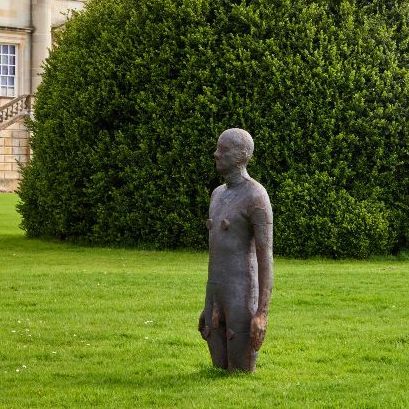
Recently put in dialogue with Rodin, sculptor Antony Gormley creates works, often composed of cast iron or other materials, focused on the body's form, presence, and relationship to space. By integrating the human figure into various environments, Gormley challenges perceptions of scale and identity. His innovative use of materials and spaces continues to redefine the boundaries of sculptural art.
Sensual spaces
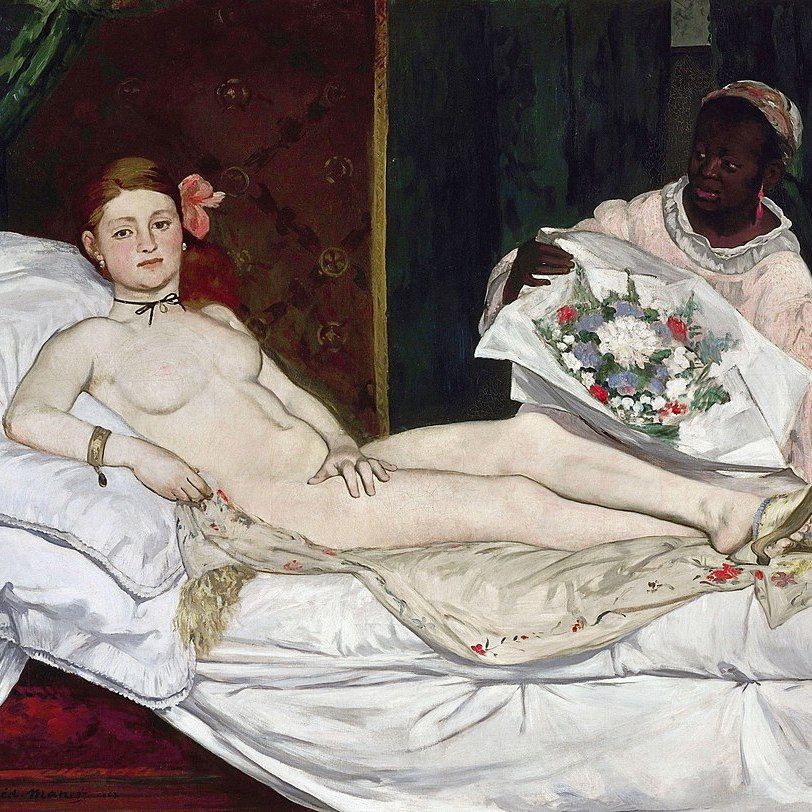
Edouard Manet's Olympia" (1863), is often linked with the Venus archetype but through a modern lens. In this work, Manet reinterprets classical themes by presenting a nude woman, Olympia, with a confrontational gaze, challenging traditional representations of the female nude. The painting broke from academic conventions by depicting the figure with stark realism and a direct, unapologetic presence.
Same position, same energy, but with a different touch and figure. Manet's bed scene has continued to inspire the depiction of reclining or sleeping figures, where the bed and surrounding objects help define or suggest the identity of the subject. Here, even the title indicates that the scene is only about this tulip bed.
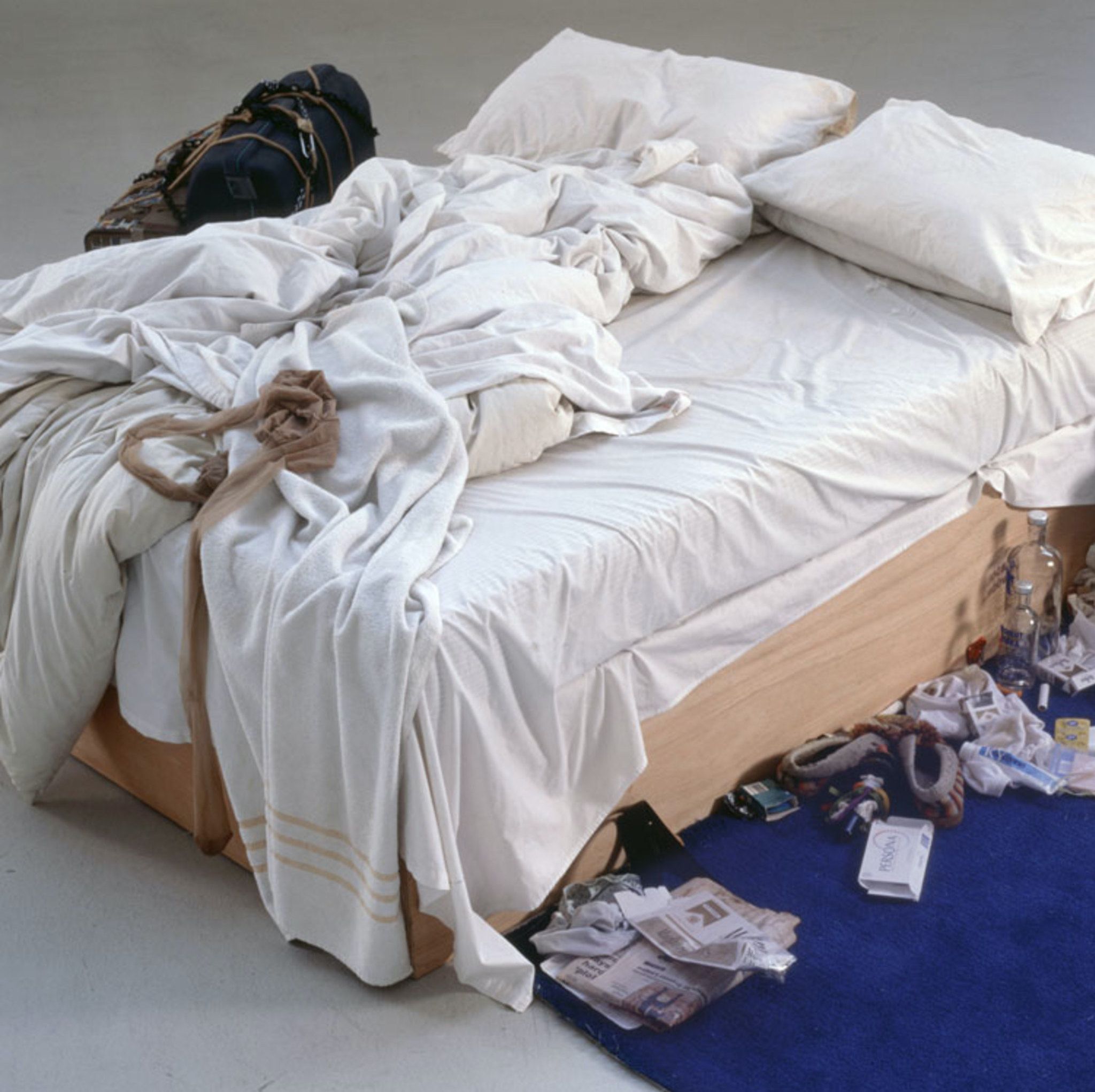
Tracey Emin's "My Bed" (1998) stands as a provocative and personal work that has left a lasting impact on contemporary art. The piece features Emin's own unmade bed, surrounded by personal detritus, offering a raw and unfiltered glimpse into her private life. By presenting this intimate space as art, Emin challenges traditional boundaries of what constitutes a legitimate subject for artistic expression. "My Bed" has influenced the way artists approach themes of vulnerability, domesticity, and identity, continuing to resonate as a powerful statement on personal experience and the intersection of art and everyday life.
Polina Barskaya appears to build upon the legacy of intersecting sensual tension and bedroom aesthetics. Her work explores the intimate and evocative qualities of personal spaces, continuing the dialogue established by pieces like Tracey Emin's "My Bed." By delving into the dynamics of personal and sensual environments, Barskaya’s art reflects a nuanced understanding of how private spaces can evoke complex emotional and psychological responses.